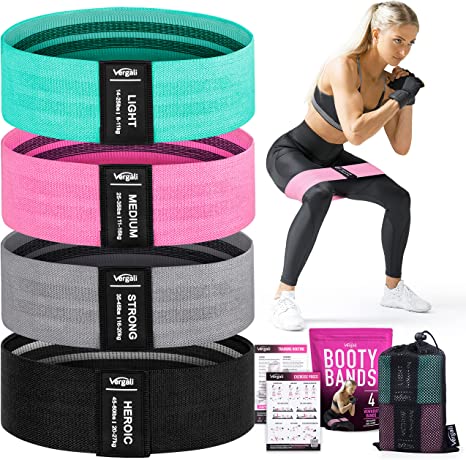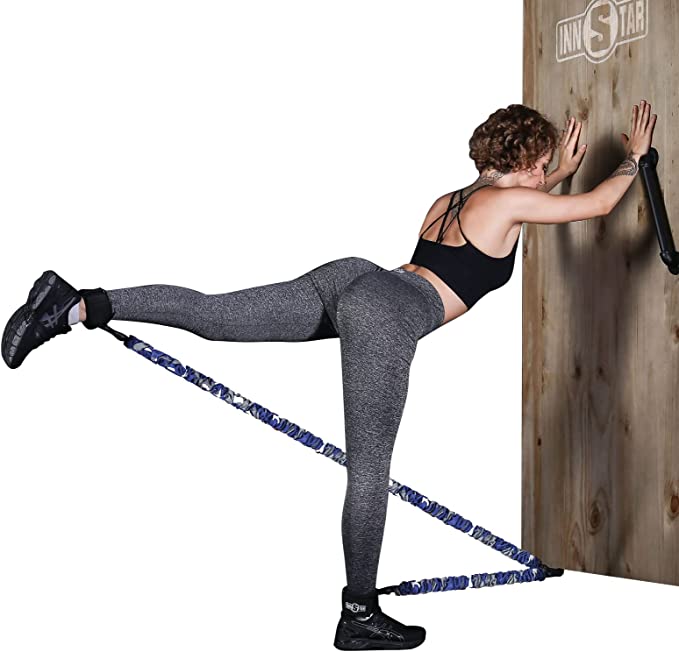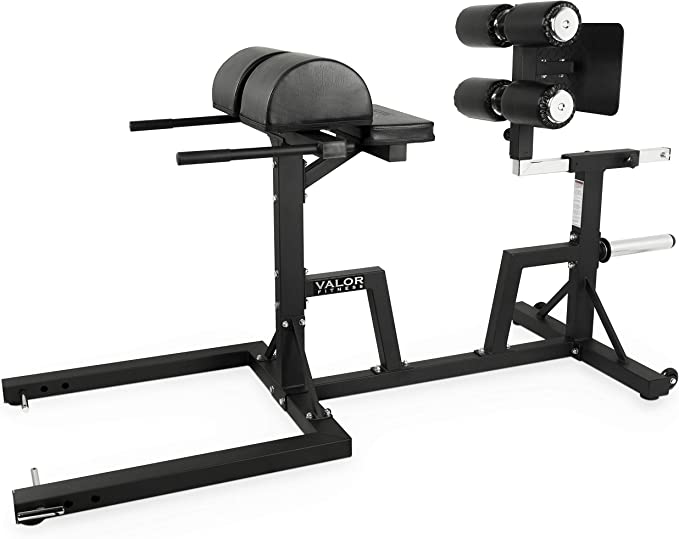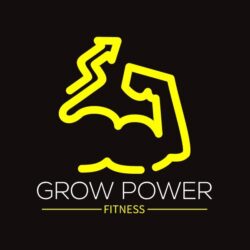Are you looking to strengthen and shape your glutes? Having strong glute muscles goes beyond aesthetics; it contributes to overall lower body strength and stability. In this article, we’ll explore the importance of glute exercises, their benefits, and the best exercises to target your glutes effectively. Whether you’re an athlete, fitness enthusiast, or someone looking to enhance their lower body strength, these exercises will help you achieve your goals.
Why Are Glute Exercises Important?
The gluteal muscles, comprised of the gluteus maximus, gluteus medius, and gluteus minimus, are some of the largest muscles in the body. They play a vital role in various lower body movements, such as walking, running, jumping, and squatting. However, due to our sedentary lifestyles and prolonged sitting, these muscles can become weak and inactive. Incorporating glute exercises into your fitness routine helps activate and strengthen these muscles, improving overall lower body function.

Sunny Health & Fitness Squat Assist Row-N-Ride™ Trainer for Glutes Workout
Benefits of Strong Glutes
Enhanced Athletic Performance
Strong glutes are essential for optimal athletic performance. Whether you’re a runner, cyclist, or play sports like soccer or basketball, powerful glutes provide stability, explosiveness, and improved movement efficiency. They contribute to speed, agility, and vertical jump height, making them crucial for athletes across various disciplines.
Injury Prevention
Weak glutes can lead to imbalances in the lower body, which increases the risk of injuries. By strengthening your glutes, you can alleviate stress on other muscles and joints, reducing the likelihood of knee, hip, or lower back pain. Additionally, strong glutes help maintain proper alignment during exercises and daily activities, minimizing the risk of strains, sprains, and overuse injuries.
Improved Posture and Lower Back Health
Having strong glutes contributes to better posture and lower back health. Weak glutes often lead to an anterior pelvic tilt, where the pelvis tilts forward, causing an exaggerated curve in the lower back. This can result in lower back pain and poor posture. By strengthening the glutes, you can correct the pelvic alignment, promote a neutral spine, and reduce the strain on the lower back.
Increased Calorie Burn and Fat Loss
Engaging the large muscles of the glutes during workouts can significantly increase calorie expenditure and fat burning. Glute exercises, especially compound movements like squats and deadlifts, require substantial energy and activate multiple muscle groups simultaneously. This leads to a higher metabolic rate both during and after your workout, helping you achieve your fat loss goals.

Resistance Bands for Working Out with Workout Bands Guide. 4 Booty Bands for Women Men Fabric Elastic Bands for Exercise Bands Resistance Bands for Legs Bands for Working Out Hip Thigh Glute Bands Set
Top Glute Exercises for Strength and Definition
Now that we understand the importance and benefits of glute exercises, let’s dive into some of the best exercises to target and strengthen your glutes:
Squats
Squats are a compound exercise that targets the glutes, quads, and hamstrings. They can be performed with bodyweight, barbells, or dumbbells, making them versatile and suitable for various fitness levels. Focus on maintaining proper form, keeping your chest up, and pushing through your heels to activate the glutes effectively.
Deadlifts
Deadlifts primarily target the posterior chain, including the glutes, hamstrings, and lower back. They are excellent for developing overall lower body strength and power. Start with lighter weights and gradually increase as your form and strength improve.
Lunges
Lunges are unilateral exercises that target each leg individually, activating the glutes and quadriceps. They can be performed in various directions, such as forward lunges, reverse lunges, and lateral lunges, to target different angles of the glute muscles. Maintain proper alignment and step far enough to ensure a deep lunge while keeping your knee in line with your ankle.
Hip Thrusts
Hip thrusts specifically target the glutes and are highly effective for glute activation and development. Position your upper back against a bench, place a barbell or resistance band across your hips, and thrust upwards while squeezing your glutes at the top of the movement. Focus on the mind-muscle connection to maximize the benefits.
Glute Bridges
Similar to hip thrusts, glute bridges activate the glutes and can be done with or without weight. Lie on your back, bend your knees, and lift your hips off the ground while contracting your glutes. Maintain a straight line from your knees to your shoulders throughout the movement.
Bulgarian Split Squats
Bulgarian split squats are a challenging exercise that targets the glutes, quads, and stabilizing muscles. Stand in a split stance with one foot elevated behind you on a bench or step. Lower your body by bending your front knee while keeping your torso upright. Return to the starting position and repeat on the other side.
Step-Ups
Step-ups are a functional exercise that works the glutes, quads, and hamstrings. Step onto a raised platform or bench with one foot, pushing through your heel to lift your body up. Step back down and repeat on the other side. Use dumbbells or a barbell for added resistance.
Cable Kickbacks
Cable kickbacks target the gluteus maximus and can be performed using a cable machine. Attach an ankle cuff to your ankle and face the cable machine. Keep your upper body stable and kick your leg back, squeezing your glutes at the top of the movement. Control the resistance on the way back to the starting position. Repeat with the other leg.
Glute-Ham Raises
Glute-ham raises are an advanced exercise that targets the entire posterior chain, including the glutes, hamstrings, and lower back. Secure your feet under a pad or have a partner hold them down. Start with your body straight and lower yourself slowly towards the ground by bending at the knees. Push back up to the starting position using your glutes and hamstrings.
Sumo Deadlifts
Sumo deadlifts place emphasis on the inner and outer thighs, as well as the glutes and hamstrings. Set up with a wide stance, toes pointed outwards, and grip the barbell with a wider grip. Keep your chest up and push through your heels as you lift the weight off the ground.
Pistol Squats
Pistol squats are a challenging single-leg exercise that requires balance, strength, and stability. Stand on one leg and extend the other leg forward. Slowly lower yourself down by bending the standing leg, keeping your chest upright. Push through the heel to return to the starting position. Modify the exercise by holding onto a stable surface for support.

INNSTAR Booty Resistance Band Glute Cord Cable Machine for Hip Home Workout Cable Kickbacks with Instructions & Carry Bag
Proper Form and Technique
While performing glute exercises, it’s crucial to maintain proper form and technique to maximize results and prevent injuries. Here are some essential tips to keep in mind:
- Engage your core muscles throughout the exercises to maintain stability and protect your spine.
- Keep your knees in line with your toes to prevent excessive stress on the joints.
- Avoid rounding your back and maintain a neutral spine alignment.
- Start with lighter weights or bodyweight exercises to ensure proper form before progressing to heavier weights.
- Focus on the mind-muscle connection by consciously engaging and squeezing your glutes during each repetition.
- Breathe rhythmically, inhaling during the eccentric phase (lowering) and exhaling during the concentric phase (lifting).
Creating an Effective Glute Workout Routine
To create an effective glute workout routine, consider incorporating a combination of compound movements and isolation exercises. Here’s a sample workout structure to help you get started:
- Warm-up exercises: Begin with 5-10 minutes of dynamic movements such as walking lunges, hip circles, and leg swings to increase blood flow to the glutes and activate the muscles.
- Compound movements: Perform 2-3 compound exercises like squats, deadlifts, or lunges, focusing on 3-4 sets of 8-12 repetitions. These exercises target multiple muscle groups, including the glutes, for overall lower body strength.
- Isolation exercises: Follow the compound movements with 2-3 isolation exercises that specifically target the glutes, such as hip thrusts, glute bridges, or cable kickbacks. Aim for 3-4 sets of 10-15 repetitions for each exercise.
- Progressive overload: Gradually increase the weight or resistance as your strength improves to continue challenging your glute muscles. This progressive overload stimulates growth and strength development.
- Rest and recovery: Allow your muscles at least 48 hours of rest between glute workouts to recover and adapt to the training stimulus. Adequate rest is crucial for muscle growth and preventing overuse injuries.
Remember to customize your workout routine based on your fitness level, goals, and any specific considerations or limitations you may have.

MhIL 5 Resistance Bands for Working Out – Booty Bands for Women and Men, Best Exercise Bands, Workout Bands for Workout Legs Butt Glute Squat – Stretch Gym Fitness Bands Set – Home Elastic Loops Band
How Often Should You Train Glutes?
The frequency of glute training depends on various factors, including your fitness level, recovery capacity, and overall training volume. As a general guideline, aim to train your glutes 2-3 times per week, with at least one day of rest between workouts. This frequency allows for sufficient stimulus and recovery to promote muscle growth and strength gains.
However, it’s important to listen to your body and adjust the frequency accordingly. If you’re a beginner or have just started incorporating glute exercises into your routine, starting with 2 sessions per week may be sufficient. As your strength and conditioning improve, you can gradually increase the frequency to 3 sessions per week.
Remember that rest and recovery are essential for muscle growth and preventing overtraining. It’s during rest periods that your muscles repair and adapt to the stress of exercise. If you’re experiencing excessive soreness, fatigue, or a decline in performance, it may be a sign that you need more rest between glute workouts.
Additionally, alternating between glute-focused workouts and other muscle groups can help you maintain a balanced training routine. For example, you can train your glutes on Monday and Thursday, while focusing on upper body exercises on Tuesday and Friday.
Always prioritize quality over quantity when it comes to your workouts. It’s better to perform fewer repetitions with proper form and technique than to rush through exercises with poor form. This ensures that you’re effectively targeting and activating the glute muscles.
Common Mistakes to Avoid
To make the most out of your glute exercises and prevent potential injuries, be mindful of these common mistakes:
Neglecting proper form
Maintaining proper form is crucial for targeting the glutes effectively and minimizing the risk of injury. Avoid rounding your back, collapsing your knees inward, or using momentum to complete the movements. Focus on engaging the glutes and maintaining a stable, aligned position throughout each exercise.
Using excessive weight
While it’s important to challenge yourself, using excessively heavy weights can compromise your form and increase the risk of injury. Gradually increase the weight as your strength improves, ensuring that you can maintain proper technique throughout the entire range of motion.
Not incorporating variety
To stimulate continued progress and prevent plateaus, it’s essential to incorporate a variety of glute exercises into your routine. Aim for a mix of compound exercises and isolation exercises that target different angles and aspects of the glutes. This ensures comprehensive development and prevents muscle imbalances.
Skipping warm-up and cooldown
Warm-up exercises are crucial for preparing your muscles, joints, and connective tissues for the workout ahead. They increase blood flow, improve mobility, and activate the glute muscles. Similarly, a cooldown routine helps with recovery, reducing muscle soreness, and promoting flexibility. Don’t skip these important steps in your glute training.

Valor Fitness CB-29 Adjustable Glute Developer Ham Machine (GHD) Ab Hip Back Extensions Sit Ups – Includes Band Pegs – Olympic Plate Storage – Home Gym Workout Exercise Equipment Max Weight 400 lbs
FAQs
1. Can I train glutes every day?
Training your glutes every day is not necessary and may lead to overtraining and insufficient recovery time. It’s recommended to allow at least one day of rest between glute-focused workouts to promote muscle growth and prevent overuse injuries.
2. How long does it take to see results from glute exercises?
The time it takes to see results from glute exercises can vary depending on various factors such as genetics, consistency, and intensity of training. With regular and focused glute training, combined with proper nutrition, you can start noticing improvements in strength and shape within a few weeks to a couple of months.
3. Should I use weights when performing glute exercises?
Using weights, such as dumbbells, barbells, or resistance bands, can add resistance and increase the intensity of glute exercises. However, it’s not necessary to use weights, especially for beginners. Bodyweight exercises can still provide an effective workout for the glutes. As you progress, gradually incorporate weights to continue challenging your muscles.
4. Can I do glute exercises at home without equipment?
Yes, you can effectively train your glutes at home without equipment. Bodyweight exercises like squats, lunges, glute bridges, and pistol squats can be performed to target your glutes. Additionally, you can use household items such as water bottles or resistance bands to add resistance to your exercises. Incorporating exercises like step-ups on a sturdy chair or bench can further enhance your glute workout at home. While having access to gym equipment provides more variety, you can still achieve great results with bodyweight exercises and creative alternatives.
5. Are glute exercises suitable for beginners?
Glute exercises are suitable for beginners as well as individuals of all fitness levels. It’s important to start with exercises that match your current strength and capabilities. Begin with bodyweight movements and focus on mastering proper form and technique. As you progress and build strength, you can gradually increase the difficulty by adding resistance or progressing to more challenging exercises. Consulting with a fitness professional or personal trainer can also help in designing a safe and effective glute workout routine tailored to your fitness level.
Conclusion
Strong and well-developed glutes are not only aesthetically pleasing but also contribute to overall lower body strength, stability, and athletic performance. Incorporating a variety of glute exercises into your fitness routine can help you achieve these goals. Remember to focus on proper form, progressively challenge your muscles, and allow for sufficient rest and recovery. By consistently incorporating glute exercises into your training routine, you’ll be on your way to a stronger and more defined lower body.

